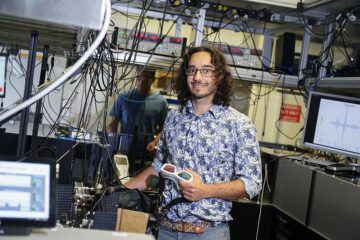PLA–Inhibitor (stoPLA) – New class of NSAIDs for oral and transdermal inflammation treatment

PLA2 enzymes cleave phospholipids at the sn-2-position.
They exist as secreted and cytosolic forms. The cytosolic PLA2 (cPLA2) appears to play a key role in the pathway leading to the formation of inflammatory lipid mediators such as prostaglandins, leukotrienes and platelet activating factor, thus this enzyme is instrumental in pathogenic processes causing pain and inflammation. Presently topical application of glucocorticoids constitutes the most common way in the treatment of inflammatory dermatological disorders. Unfortunately, exposure of glucocorticoids has serious side effects, like skin atrophia, which limit their use as medication for inflammatory dermatitis. stoPLA is a new class of heteroaryl-substituted acetone derivatives for the effective inhibition of cytosolic PLA2 (cPLA2). These compounds effectively interact with the synthesis of prostaglandins and leukotrienes and reduce inflammatory processes. The new heteroaryl-substituted acetone derivatives have also an excellent solubility profile and are stable against metabolic inactivation through ketogroup reduction.
Weitere Informationen: PDF
PROvendis GmbH
Tel.: +49 (0)208/94105 10
Ansprechpartner
Dipl.-Ing. Alfred Schillert
Media Contact
Alle Nachrichten aus der Kategorie: Technologieangebote
Neueste Beiträge

Neue universelle lichtbasierte Technik zur Kontrolle der Talpolarisation
Ein internationales Forscherteam berichtet in Nature über eine neue Methode, mit der zum ersten Mal die Talpolarisation in zentrosymmetrischen Bulk-Materialien auf eine nicht materialspezifische Weise erreicht wird. Diese „universelle Technik“…

Tumorzellen hebeln das Immunsystem früh aus
Neu entdeckter Mechanismus könnte Krebs-Immuntherapien deutlich verbessern. Tumore verhindern aktiv, dass sich Immunantworten durch sogenannte zytotoxische T-Zellen bilden, die den Krebs bekämpfen könnten. Wie das genau geschieht, beschreiben jetzt erstmals…

Immunzellen in den Startlöchern: „Allzeit bereit“ ist harte Arbeit
Wenn Krankheitserreger in den Körper eindringen, muss das Immunsystem sofort reagieren und eine Infektion verhindern oder eindämmen. Doch wie halten sich unsere Abwehrzellen bereit, wenn kein Angreifer in Sicht ist?…

















